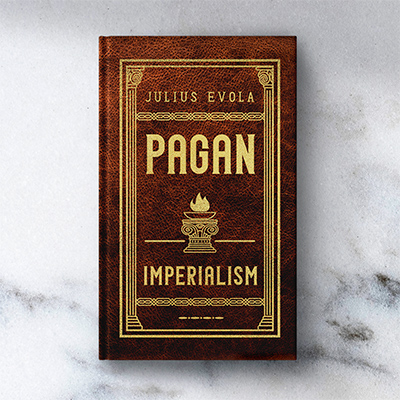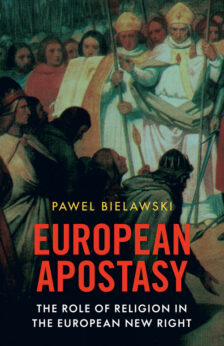As poetically recounted by Oswald Spengler in The Decline of the West, when Jesus of Nazareth was taken before Pontius Pilate, two dimensions of reality faced off against each other in an epoch-making showdown. When asked what he was preaching that was causing such trouble, Jesus replied, “The Truth.” The Roman governor in Judea could only chuckle, for what was “truth” — lower-case t — to him? Truth was actuality, materiality, human events. Even in this far-flung province, it was the sovereign will of Rome.
It was a history-making standoff in the everlasting battle between the eternal dimension of Being and the fluctuating world of Becoming, whose intersection has been traditionally symbolized by the cross. Composed of two simple lines, the cross can serve us as a constant reminder that we live at the meeting point between the temporal and the eternal. The vertical line of the cross symbolizes everything divinely ordained, immutable, calm, ordered, eternal, while to the horizontal belongs the changing seasons, the cycles of life and death, the rise and fall of empires, and the ever-changing social values, material developments, and everything else that falls under the term “culture.” Both dimensions are part of the Creator’s design, but it’s obvious which is supreme and to which all human endeavor is ultimately to be directed.
In the age of dissolution, the man of spirit steps outside and is gripped by profound disgust, muttering, “O tempora, o mores!” between grit teeth. But the “contemptus mundi” we feel is not for the world God created, but rather the world made by man when he exorcises all reference to the world of Tradition from his consciousness.
Modern society is not the “world.”
The world is the dimension of reality you may enter at any time by sitting on a park bench and observing the birds and bees going about the tasks to which they were assigned. In this world you can smell blossoms on the breeze and see the clouds roll by, and you can also witness the inner rhythms of your heart as impressions come and go, ideas take shape in the imagination, and new possibilities for life take shape.
There is also an inner world, which is the realm you access when you lie on your back, close your eyes, and listen to the third movement from Schumann’s second symphony. This is the world of Art with a capital A, of Beauty with a capital B, and of the Castle where the spirits of the ancestors live, and which is now all but absent from the heart-shaped hole of the hollow men of the modern world.
To strengthen our ability to hold the two dimensions of Being and Becoming in consciousness simultaneously, we can undertake an ascetic exercise we might call “walking the cross.” Whether in the first rays of dawn, the exquisite hour of twilight, under the sun at high noon or beneath the stars at night, we can find a peaceful place to walk with focus on the vertical dimension of the cross — the real world of the earthly creation and our creative impressions of it — and break through the hypnotic hold of the false world of contemporary society.
This simple action within the eternal dimension is what Julius Evola means when he says, “Act from Being,” and we should not underestimate the feeling of ecstatic liberation when we remind ourselves that we still possess the free will to walk and run and climb and sing — in other words, to act — within the vertical dimension of divine creation, and not just react to the stimulations of a diabolically false and inverted society. As the illusory world evaporates from our mind — “counterfeit” is René Guénon’s term for modern society — our posture straightens and our stride sheds its nervous agitation, and we walk with our chin held high, an incarnated being acting in the realm of the divine creation.
Consider these lyrics from the 1975 song “Man on the Silver Mountain,” with Ronnie James Dio on vocals:
I’m a wheel, I’m a wheel
I can roll, I can feel
And you can’t stop me turning
Cause I’m the sun, I’m the sun
I can move, I can run
But you’ll never stop me burning
Come down with fire
Lift my spirit higher
Someone’s screaming my name
Come and make me holy again
The French translation of the Word as Le Verbe carries a special nuance, denoting both the state of Being but also implying action within that realm. “Walking the cross” fills us with wonder at the majesty of creation, and this sense of wonder leads to a state of detachment in the best sense: the point of view of looking upon our earthly life from the top of the cross, the spiritual dimension, the Traditional realm whose light comes down “from above” to permeate our being, fill us with its powers, and guide us through the age of darkness.
Christian Chensvold is the author of Dark Stars: Heroic Spirituality in the Age of Decadence, which reveals the influence of Julius Evola’s esoteric writings.








Thanks.